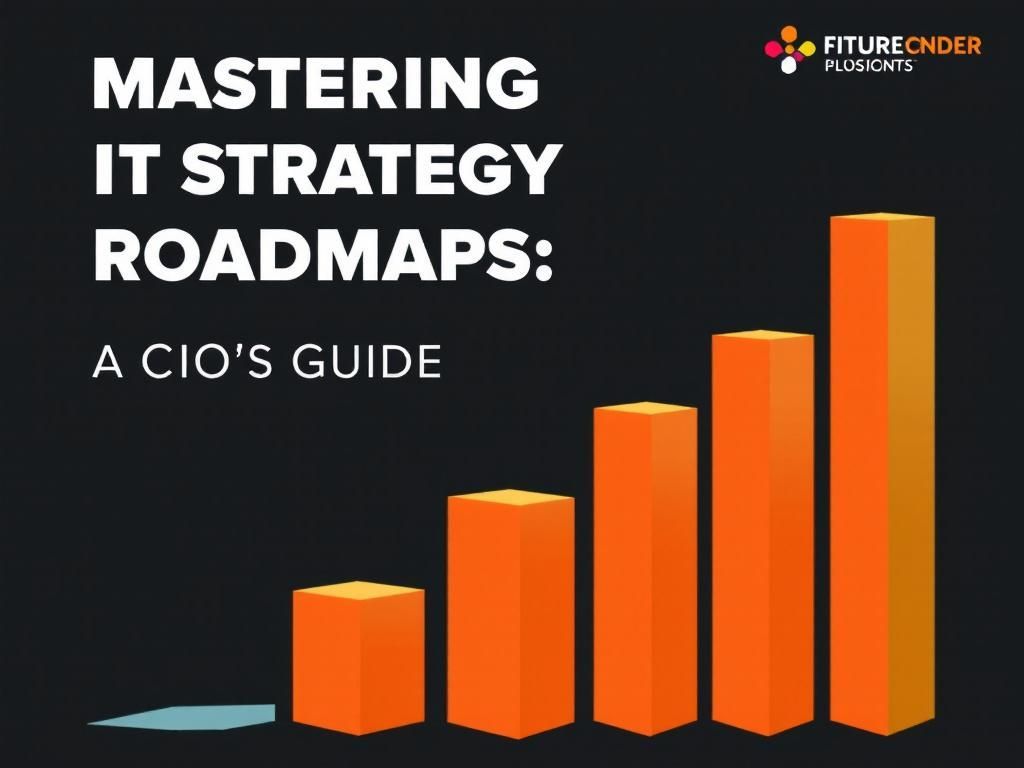Mastering IT Strategy Roadmaps for CIOs
Discover how CIOs can effectively create and implement IT strategy roadmaps to enhance business alignment and drive innovation.

In the ever-evolving digital landscape, the role of the Chief Information Officer (CIO) is more critical than ever. With the rapid advancement of technology and shifting market demands, CIOs must adeptly navigate and align IT strategy with overarching business objectives. One of the most effective tools at their disposal is the IT strategy roadmap. This comprehensive article delves into the significance of mastering IT strategy roadmaps, highlighting best practices and key components that every CIO should consider.
Table of Contents
Understanding the IT Strategy Roadmap
An IT strategy roadmap serves as a visual representation of an organization’s technology strategy over time. It aligns IT initiatives with business goals, ensuring that technology investments are tailored to drive value. The roadmap is not merely a static document; it is a dynamic tool that evolves as the organization grows and technology changes.
Key Components of an IT Strategy Roadmap
- Vision and Objectives: Clearly define the long-term vision for IT in alignment with business goals.
- Current State Analysis: Evaluate the existing IT landscape, including systems, processes, and capabilities.
- Future State Design: Outline the desired future state of IT, considering emerging technologies and trends.
- Gap Analysis: Identify the gaps between current and future states to prioritize initiatives effectively.
- Initiatives and Projects: Develop a list of projects that will bridge the identified gaps.
- Timeline: Establish a realistic timeline for each initiative to ensure accountability.
- Stakeholder Engagement: Involve key stakeholders in the development process to garner support and insights.
Why CIOs Need a Comprehensive Roadmap
A well-structured IT strategy roadmap is crucial for several reasons:
- Alignment with Business Strategy: Ensures that IT initiatives support the overall business objectives, leading to more informed decision-making.
- Resource Allocation: Helps in prioritizing IT investments, ensuring that resources are allocated to the most impactful projects.
- Risk Management: Identifies potential risks upfront, allowing for proactive mitigation strategies.
- Communication Tool: Serves as a communication aid for conveying IT strategy to stakeholders, including executives and board members.
- Performance Measurement: Provides a framework for measuring progress against strategic goals.
Steps to Create an Effective IT Strategy Roadmap
1. Define Your Vision
Begin by articulating a clear vision for your IT strategy. This vision should align with the organization’s mission and strategic goals. Engage with senior leadership to understand their priorities and expectations.
2. Conduct a Current State Assessment
Evaluate the current IT landscape by conducting a thorough analysis of:
- Existing infrastructure and applications
- IT processes and workflows
- Compliance and security posture
This assessment will help identify strengths, weaknesses, and areas for improvement.
3. Identify Future Trends
Stay abreast of emerging technology trends and industry shifts that could impact your organization. Key trends to consider may include:
| Technology Trend | Impact on IT Strategy |
|---|---|
| Cloud Computing | Scalability and cost savings through cloud adoption. |
| Artificial Intelligence | Automation of processes and enhanced data analytics. |
| Cybersecurity | Increased need for robust security measures. |
| Data Analytics | Informed decision-making through data-driven insights. |
4. Perform a Gap Analysis
With a clear understanding of the current and future states, conduct a gap analysis to determine what initiatives are needed to bridge the divide. This involves:
- Identifying specific capabilities required
- Prioritizing initiatives based on business value
- Communicating findings with stakeholders
5. Develop Your Roadmap
Create a visual representation of the roadmap that outlines key initiatives, timelines, and responsible parties. Ensure that the roadmap is flexible enough to accommodate changes in the business environment.
6. Communicate and Engage
Share the roadmap with stakeholders at all levels of the organization. Regular updates and feedback sessions will help maintain engagement and support for IT initiatives.
Best Practices for Implementing the IT Strategy Roadmap
Regular Reviews and Updates
Technology and business environments are constantly changing; therefore, it’s crucial to review and update the roadmap regularly. Schedule periodic checkpoints to assess progress and refine strategies as needed.
Stakeholder Involvement
Involve key stakeholders throughout the roadmap development and implementation process. This collaboration fosters a sense of ownership and increases the likelihood of successful adoption.
Leverage Metrics for Success
Establish key performance indicators (KPIs) to measure the success of each initiative. These metrics will help gauge performance and inform future decisions:
- Project completion rate
- Budget adherence
- User satisfaction scores
- Return on investment (ROI)
Common Challenges and How to Overcome Them
Resistance to Change
Change can be met with resistance. To mitigate this, ensure effective communication and provide training to ease the transition.
Limited Resources
Budget constraints can hinder IT initiatives. Prioritize projects based on urgency and impact to make the best use of available resources.
Misalignment with Business Goals
Regularly engage with business leaders to ensure that IT initiatives align with evolving business objectives. Frequent check-ins can help maintain alignment.
Conclusion
Mastering IT strategy roadmaps is essential for CIOs aiming to drive organizational success through technology. By understanding the components of an effective roadmap, following best practices, and addressing potential challenges, CIOs can ensure that their IT strategies are not just theoretical but practical and impactful. The roadmap is not just a plan; it’s a strategic guide that will propel the organization into the future.
FAQ
What is an IT strategy roadmap?
An IT strategy roadmap is a visual representation that outlines the strategic direction of IT initiatives and projects, aligning technology investments with business goals.
Why are IT strategy roadmaps important for CIOs?
IT strategy roadmaps are crucial for CIOs as they provide a clear framework for prioritizing IT projects, managing resources effectively, and ensuring alignment with the overall business strategy.
How do you create an effective IT strategy roadmap?
To create an effective IT strategy roadmap, CIOs should identify key business objectives, assess current IT capabilities, involve stakeholders, and prioritize initiatives based on impact and feasibility.
What are common challenges faced when developing IT strategy roadmaps?
Common challenges include lack of stakeholder buy-in, rapidly changing technology landscapes, resource constraints, and difficulty in measuring ROI on IT investments.
How often should IT strategy roadmaps be updated?
IT strategy roadmaps should be reviewed and updated regularly, typically on an annual basis or whenever there are significant changes in business goals or technology trends.
What tools can assist in creating IT strategy roadmaps?
There are several tools available for creating IT strategy roadmaps, including project management software, visualization tools, and specific roadmap planning applications that facilitate collaboration and tracking.






